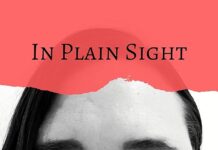In an era flooded with information and quick fixes, distinguishing fact from folly has become an increasingly urgent challenge. Ben Goldacre’s Bad Science steps boldly into this turbulent landscape, wielding sharp wit and rigorous analysis to dissect the myths and misrepresentations that often cloud our understanding of health and science. This review aims to unmask the layers of selective evidence, sensationalism, and flawed reasoning that Goldacre exposes, offering readers a thoughtful exploration of his compelling critique and its enduring relevance in a world hungry for reliable truth.
The Power of Critical Thinking in Challenging Pseudoscience and Misleading Medical Claims
In an era flooded with sensational headlines and quick-fix health solutions, the ability to scrutinize information critically has become indispensable. Ben Goldacre’s work highlights how pseudoscience thrives on emotional appeal and anecdotal evidence, often overshadowing rigorous scientific inquiry. Critical thinking equips us to dissect these claims with a discerning eye, questioning the origin, methodology, and validity of the data presented. by fostering skepticism-not cynicism-readers can identify red flags such as:
- Overreliance on testimonials instead of clinical trials
- Conflicts of interest hidden behind glossy marketing
- Misinterpretation or cherry-picking of scientific studies
- Use of vague or jargon-laden language to obfuscate facts
Moreover, adopting a critical mindset encourages informed discussions about health choices, empowering individuals to prioritize evidence-based treatments. Below is an example snapshot illustrating typical differences between trustworthy and misleading medical claims:
| Feature | Trustworthy Claim | Misleading Claim |
|---|---|---|
| Evidence Type | Peer-reviewed studies | Anecdotes and personal stories |
| Source Transparency | Clear authorship and affiliations | Anonymous or undisclosed sponsors |
| Language Used | Measured, precise terminology | Exaggerated and emotive phrases |
| Reproducibility | Results verified by multiple studies | Claims based on single, isolated findings |
Exploring Ben Goldacre’s Approach to Demystifying Complex Scientific Concepts for the General public
Ben Goldacre’s methodology shines brightest in his ability to translate intricate scientific jargon into accessible narratives without sacrificing accuracy. Through his engaging storytelling and sharp wit, he dismantles layers of misunderstanding, making science not only understandable but also intriguing for the lay audience. By critically evaluating media reports, pharmaceutical claims, and common health myths, Goldacre champions a culture of skepticism and curiosity, empowering readers to question the validity of the information presented to them daily.
His approach often involves dissecting complex data into digestible fragments, complemented by vivid examples and analogies that resonate beyond the laboratory. Consider the following table outlining key techniques he employs to bridge the gap between experts and the general public:
| Technique | Description | Impact |
|---|---|---|
| Use of Humor | Injects wit to lighten dense topics | Enhances engagement and retention |
| Real-World Examples | Links theory to everyday experiences | Makes abstract concepts relatable |
| Visual Analogies | Employs metaphors and imagery | Simplifies complex ideas effectively |
| Critical Examination | breaks down flawed studies and claims | Promotes informed skepticism |
How Bad Science Exposes the Role of media in Spreading Misinformation and Misinterpreted Data
In the intricate dance between scientific finding and public comprehension, media often plays the role of both narrator and interpreter. However, Bad Science illuminates how this relationship frequently falters, leading to the propagation of misleading narratives. sensational headlines and oversimplified data snippets,designed to capture attention quickly,can distort the true implications of scientific findings. This accelerates the spread of misinformation, as nuanced results are transformed into soundbites that misrepresent reality. The media’s tendency to prioritize shock value over accuracy contributes significantly to public confusion, as complex research is boiled down to incomplete or misleading claims.
Goldacre’s critique highlights several key factors in this dynamic:
- Misinterpretation of statistics: Journalists often lack the expertise to decode complex data, leading to flawed conclusions.
- Overreliance on anecdotal evidence: Personal stories are favored over rigorous studies for emotional impact.
- Failure to disclose uncertainties: Scientific findings are rarely absolute, yet reports seldom emphasize this ambiguity.
| Media Practice | Typical Outcome |
|---|---|
| Headline exaggeration | Public panic or false hope |
| Ignoring study limitations | Overstated scientific certainty |
| Simplification of methods | Loss of critical context |
Recognizing these patterns is a first step toward fostering a more informed public dialog. By demanding higher standards of scientific reporting and critical consumption from media outlets, society can better safeguard truth and nurture genuine understanding.
A Close Examination of Anecdotes and Case Studies That Reveal Flaws in Popular health trends
Ben Goldacre’s incisive exploration offers a revealing look into how widely accepted health trends often rest on shaky grounds, brought to light through compelling anecdotes and case studies. These narrative snapshots expose the gaps between scientific claims and real-world evidence, illustrating how confirmation bias, selective reporting, and flawed study designs can shape public perception. For example, the surge in popularity of certain ‘detox’ regimens is frequently bolstered by passionate testimonials rather than rigorous clinical data, creating an alluring but misleading narrative that can divert individuals from evidence-based health decisions.
Goldacre’s analysis also emphasizes the need for critical scrutiny of the so-called ‘miracle cures’ endorsed by celebrities or viral marketing campaigns. By dissecting specific case studies, including those involving overhyped supplements and fad diets, he uncovers patterns of distorted data and exaggerated benefits.
- Lack of control groups leading to misleading cause-effect assumptions
- Small sample sizes that fail to represent diverse populations
- Publication bias which favors positive results over null findings
| Health Trend | Common Claim | Goldacre’s Critique |
|---|---|---|
| Alkaline Diet | “Balances body pH to improve health” | Lacks supporting biochemical evidence; ignores body’s natural regulation |
| Detox Cleanses | “Flushes out toxins and boosts energy” | No measurable toxin accumulation addressed; placebo effects dominate |
| Supplement ‘Superfoods’ | “Rich source of antioxidants preventing disease” | Antioxidant effects in supplements not consistently beneficial; may cause harm |
The Importance of Statistical Literacy in Understanding and Evaluating Scientific Research Outcomes
In an era where scientific claims flood our daily lives-from health fads to environmental debates-statistical literacy emerges as a critical tool for discerning fact from fiction. Ben Goldacre’s Bad Science highlights that without a basic understanding of statistics, even well-meaning readers can fall prey to misleading interpretations, cherry-picked data, and flawed methodologies. Recognizing the difference between correlation and causation, understanding confidence intervals, and critically appraising sample sizes are not just academic exercises; they empower individuals to evaluate scientific outcomes with a healthy skepticism and informed judgment.
Below is a simple table illustrating common misinterpretations frequently encountered in popular reporting of scientific studies. Grasping these concepts equips readers to ask the right questions and demand better evidence rather than just accepting bold headlines.
| Common Statistical Error | What It Means | why It matters |
|---|---|---|
| Ignoring Sample Size | Small samples may not represent the population. | Leads to overgeneralization of results. |
| Confusing Correlation with Causation | Two events occurring together are not always linked. | Results in false conclusions about cause and effect. |
| Selective Reporting | Only notable results are shared. | Creates a biased understanding of reality. |
| Overreliance on P-Values | Misinterpreting statistical significance as practical relevance. | Distorts the real-world impact of findings. |
- Empowerment: Statistical literacy arms readers with the power to challenge dubious claims and embrace credible science.
- Informed Decisions: It enhances our capacity to make choices grounded in evidence rather than sensationalism.
- Guarding Against Misinformation: by decoding statistics, we reduce the risk of spreading health and science myths.
Unpacking the Ethical Responsibilities of Scientists and Journalists Highlighted in This Provocative Work
In Bad Science, Ben goldacre masterfully dissects the tangled web of responsibility that both scientists and journalists must navigate. scientists bear the onus of rigorous methodology and transparent interaction, ensuring that their findings are not only accurate but accessible to a broader audience. Yet, as Goldacre illustrates, even the most groundbreaking research can be undermined when ethical boundaries blur-whether through selective data reporting, overhyped conclusions, or neglecting reproducibility. This book is a stark reminder that scientific integrity is not merely an academic ideal but a crucial pillar holding up public trust and informed decision-making.
Journalists, on the other hand, hold the daunting task of translating complex scientific concepts without distorting the essence of the facts. Goldacre spotlights how sensationalism and inadequate fact-checking can stoke misinformation, contributing to public confusion rather than clarity. Their ethical responsibility extends beyond storytelling to include:
- Verifying sources diligently
- Contextualizing findings accurately
- Resisting the allure of clickbait headlines
Together, scientists and journalists form a delicate ecosystem where trust can flourish only when both adhere to their ethical duties. Their collaborative accountability serves as a beacon,guiding the public away from the murkiness of “bad science” and toward enlightenment.
Strategies Recommended by Goldacre for Readers to Become More Discerning Consumers of Scientific Information
Ben Goldacre emphasizes cultivating a critical mindset when engaging with scientific claims, urging readers to question sources, examine the evidence, and remain vigilant against oversimplifications. He advocates for digging beneath headlines, encouraging consumers to seek original research rather than relying solely on media interpretations.Understanding the basics of study design, such as the difference between correlation and causation, empowers readers to discern whether conclusions are genuinely supported by data or merely anecdotal. Goldacre also stresses the importance of recognizing conflicts of interest, which may skew results or interpretations in unexpected ways.
To help readers internalize these principles, Goldacre provides practical heuristics that can act like a mental checklist before accepting scientific information at face value. These include:
- Check who funds the research – financial incentives can distort findings.
- Look for replication – credible science is often repeatable and validated.
- Beware of sensational claims – extraordinary assertions require extraordinary evidence.
- Identify anecdotal evidence - personal stories rarely substitute for robust data.
- Assess the language used – scientific uncertainty is nuanced, so promises of ‘miracle cures’ or ‘breakthroughs’ should raise red flags.
| Strategy | Purpose |
|---|---|
| Scrutinize funding sources | Uncover potential biases influencing research outcomes. |
| Demand replication | Ensure findings are reliable and not flukes. |
| Contextualize claims | Place results within broader scientific consensus. |
| Analyze language | Detect exaggerations or false certainty. |
Reflections on How Bad Science encourages a Culture of Transparency and Accountability in Research
Ben Goldacre’s Bad Science brilliantly exposes the pitfalls of flawed research,but more importantly,it sparks a vital dialogue about the role of transparency and accountability in science. When researchers openly acknowledge their errors and limitations, they foster trust and encourage a culture where knowledge evolves through critique and iteration. This openness dismantles the mystique of infallibility commonly associated with scientific authority, making science more accessible and understandable to the public. As a result, even “bad” science becomes a stepping stone toward progress, highlighting the importance of rigorous peer review, data sharing, and ethical reporting.
To fully embrace this shift, institutions and scientists alike must commit to the following principles:
- Clear Disclosure: Transparent documentation of methodologies and potential conflicts of interest.
- Constructive Criticism: Encouraging respectful and data-driven challenges to findings.
- Reproducibility: Making raw data and protocols accessible for validation by the scientific community.
- Continuous Education: Training researchers in ethical communication and critical thinking.
| Benefit | Impact |
|---|---|
| Transparency | Builds public trust |
| Accountability | Reduces research bias |
| Collaboration | Accelerates innovation |
| Education | Improves scientific literacy |
Assessing the Impact of This book on Public Perception of Evidence-Based Medicine and Healthcare Decisions
Ben Goldacre’s Bad Science has played a pivotal role in reshaping how the general public perceives evidence-based medicine (EBM) and healthcare decisions. by demystifying the jargon of clinical trials and exposing the often murky interplay between media sensationalism and scientific reporting, Goldacre empowers readers to approach medical claims with a more skeptical and informed eye. The book’s emphasis on critical thinking encourages individuals not just to accept medical advice at face value, but to question the quality and origin of evidence backing it. This shift has fostered a culture where patients are more likely to engage in informed dialogues with healthcare providers, advocating for treatments supported by robust scientific data rather than anecdotal or misleading claims.
Moreover, Bad Science has served as an essential tool in combating misinformation in an age of rampant fake news and health myths.Its clear examples and witty tone make complex concepts accessible, enabling wider audiences to grasp the significance of study design, placebo effects, and statistical bias. The ripple effect of this understanding can be seen in the following ways:
- Increased public demand for transparency and reproducibility in medical research
- Heightened skepticism toward fad treatments and miracle cures
- Empowerment of patient communities to challenge unsupported healthcare claims
| Aspect | Pre-Bad Science | Post-Bad Science |
|---|---|---|
| Public Understanding of Clinical Trials | Limited and passive | Engaged and inquisitive |
| Trust in Medical Journalism | Uncritical acceptance | Healthy skepticism |
| Patient Involvement in Decisions | Mostly deferential | Collaborative and informed |
The Role of Skepticism and Inquiry in Navigating the Complex Intersection of Science, Medicine, and Marketing
At the heart of understanding the tangled web where science, medicine, and marketing converge lies an imperative for sharp skepticism and rigorous inquiry. Ben Goldacre’s Bad Science shines a spotlight on how easily scientific facts can be distorted,often for profit or ideology,revealing the dangers when critical thinking takes a back seat. The ability to question boldly yet thoughtfully is not just a skill but a necessity in an age where headlines shout conclusions without the subtle nuance of evidence-based reasoning. In goldacre’s analysis, we discover the profound impact of misuse and misunderstanding, from exaggerated pharmaceutical claims to the seductive simplicity of pseudoscience.
To navigate this complex intersection effectively, one must embrace a mindset that champions:
- Informed skepticism - questioning sources and motives behind scientific claims
- Data literacy - interpreting studies beyond headlines and soundbites
- Transparency awareness - recognizing conflicts of interest and marketing tactics
This triad serves as a compass, enabling individuals and professionals alike to separate genuine breakthroughs from the noise. The following table illustrates common scenarios and the questions to ask when confronted with potentially misleading scientific or medical claims:
| Scenario | Critical Question | Potential Red Flag |
|---|---|---|
| New miracle drug advertisement | who funded the study supporting this claim? | Industry-sponsored trials without independent verification |
| “Scientific breakthrough” headlines | is the evidence peer-reviewed and replicated? | single-study claims lacking broader validation |
| Popular health supplements | Are the stated benefits supported by rigorous trials? | Anecdotal testimonials without scientific proof |
Insights Into Ben Goldacre’s Writing Style and How It Engages both Experts and Lay readers Alike
Ben Goldacre masterfully straddles the line between rigorous scientific analysis and accessible narrative,creating a writing style that resonates equally with specialists and casual readers. His prose is marked by a distinctive blend of wit and clarity,which demystifies complex statistical concepts without sacrificing intellectual depth. by employing vivid anecdotes and relatable examples, Goldacre transforms potentially dry material into engaging stories that challenge the reader to question common misconceptions. This approach not only educates but also entertains, making the intricacies of scientific methods and journalistic missteps approachable for a diverse audience.
Several key techniques contribute to the effectiveness of his communication:
- Clear explanations: He breaks down jargon and technical terms with simple analogies.
- Sardonic humor: The occasional dry wit adds levity, maintaining reader interest.
- Evidence-driven arguments: Each claim is supported by well-researched data, reinforcing credibility.
- Engaging narrative structures: Storytelling techniques draw the reader deeper into the subject matter.
- Balancing tone: His writing neither patronizes novices nor alienates experts, making it universally appealing.
| Audience | engagement Strategy | Example |
|---|---|---|
| Experts | Critical analysis with detailed evidence | Challenging flawed methodologies in published studies |
| Lay Readers | Simple language and relatable stories | Explaining placebo effects through everyday scenarios |
Bad Science invites readers on a journey beyond the surface of headlines and soundbites,challenging us to navigate the tangled web of claims with a sharper eye and a steadier mind. Ben Goldacre’s meticulous dissection of misleading science doesn’t just expose the flaws-it equips us with the tools to question, to learn, and ultimately to think better. Whether your a seasoned skeptic or a curious newcomer, this book serves as a thoughtful compass in an age where truth often wears a mask.As the final page turns, one thing remains clear: understanding science is not merely about accepting facts, but about embracing inquiry itself.









